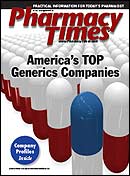Publication
Article
Generic Supplements
Ensuring the Safety of the US Drug Supply
Author(s):

Kathleen Jaeger,GPhA president andchief executive officer
There has been a great deal of discussion on Capitol Hill and in the media about drugs manufactured overseas. News stories about heparin, coupled with a November 2007 USGovernment Accountability Office report to Congress questioning the FDA's effectiveness in managing its foreign drug inspection program, have sparked congressional action on ways to ensure the continued safety of the prescription drug supply.
As pharmacists across the country know, the United States has the safest drug supply in the world. Finished dosage form manufacturers are the most highly regulated entities of the current system.
The generic pharmaceutical industry also goes the extra mile by investing tens of millions of dollars annually into state-of-the-art research, development, and manufacturing facilities; maintaining complex operational infrastructures to ensure product safety and efficacy; and developing and implementing extensive quality control and assurance systems.
We also hold our suppliers and active pharmaceutical ingredient suppliers to the highest manufacturing and compliance standards. In doing so, generic companies conduct extensive auditing of suppliers, validation testing of incoming materials, and strict due diligence programs to comply with the FDA regulations.
Clearly, the pervasively regulated generic pharmaceutical industry has demonstrated its commitment to adhering to the world's gold standard. Product safety and efficacy must always be paramount.
Therefore we have long supported measures to strengthen the foreign drug inspection system to assure safety across the board for all pharmaceutical products and to ensure substantial compliance with Good Manufacturing Practices. The generic industry has shared with Congress its principles for a robust foreign inspection program:
- Strengthening FDA funding: The FDA clearly needs sufficient resources to ensure that it can protect the public health. This means that it is critical that the current appropriations funding for domestic inspections be maintained. GPhA also supports annual registration fees to fund inspections of foreign facilities. These fees should, however, not supplant current funding to ensure the safety and integrity of the domestic inspection program.
- Establishing a uniform inspection system for both domestic and foreign facilities: The United States has the gold standard for drug safety. By establishing 1 uniform, high-quality inspection system for both domestic and foreign facilities, consumers would be assured that products are made in facilities that have quality systems, laboratories, and operational infrastructures to ensure safety.
- Implementing a "risk-based" approach: To help maximize resources and ensure that facilities at greatest risk receive the greatest attention, the generic industry supports a "risk-based" model for the foreign inspection program. This model would prioritize inspection resources according to a company's safety and compliance track record. Companies with strong records for compliance and positive inspections would be permitted to proceed to market with their products based on this track record, without delays resulting from waiting for FDA preapproval or surveillance inspections on every product. At the same time, this system would ensure that questionable or problematic facilities receive a comprehensive review and evaluation.
The foreign inspection system is only as strong as its weakest link. Failure to infuse adequate resources and implement reform measures will perpetuate a system where there is one standard for domestic FDA-approved prescription drug manufacturers and a lesser standard for foreign manufacturers. The generic industry stands ready to support Congress and the FDA in strengthening the foreign inspection program to ensure that the United States continues to maintain the gold standard of safety and efficacy.







